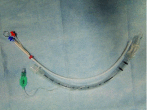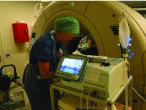The use of high-frequency ventilation during general anaesthesia: an update
- PMID: 28649372
- PMCID: PMC5464224
- DOI: 10.12688/f1000research.10823.1
The use of high-frequency ventilation during general anaesthesia: an update
Abstract
Various forms of high-frequency ventilation (HFV) have been described. HFV is broadly defined as artificial ventilation of the lungs with sub-deadspace tidal volumes delivered using supra-physiological frequencies. HFV has been used in anaesthesia and intensive care for special procedures and conditions since the 1960s. Clinical interest in the use and the technical evolution of HFV has developed over time. There is a renewed interest in HFV for avoiding parenchymal movement during stereotactic tumour ablation. The present paper aims to give an overview of the fundamental physiology, technical aspects, and clinical challenges of HFV in ablation procedures during general anaesthesia, where HFV is used to minimise the movements of the ablation target.
Keywords: high frequency ventilation; high-frequency jet ventilation; high-frequency positive pressure ventilation.
Conflict of interest statement
Competing interests: The authors declare that they have no competing interests.No competing interests were disclosed.No competing interests were disclosed.No competing interests were disclosed.
Figures






References
-
- Bohn DJ, Miyasaka K, Marchak BE, et al. : Ventilation by high-frequency oscillation. J Appl Physiol Respir Environ Exerc Physiol. 1980;48(4):710–6. - PubMed
Publication types
LinkOut - more resources
Full Text Sources
Other Literature Sources

